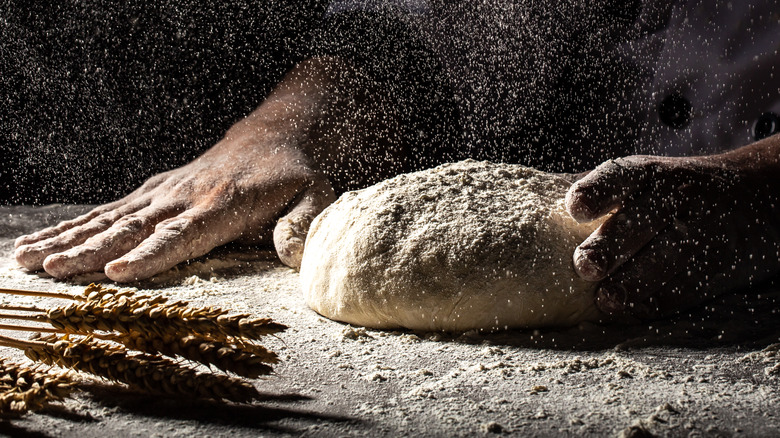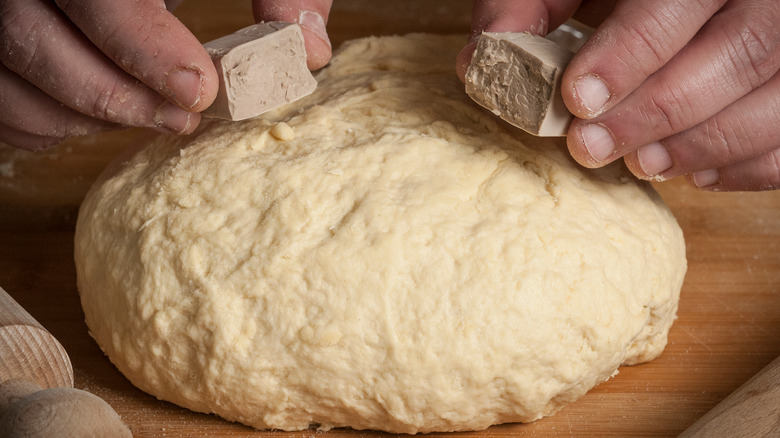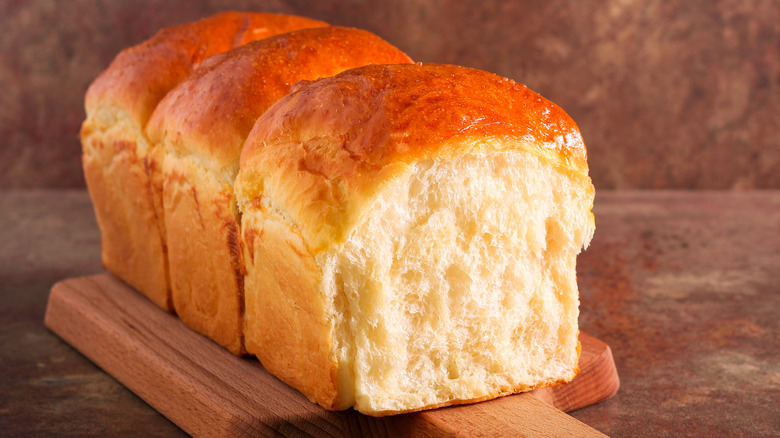The Early 19th Century Addition For More Robust Bread Dough
Yeast is a vital ingredient for bread making. We don't use a lot of it to produce homemade bread, but without yeast, the dough won't rise properly to give you that perfect light and fluffy inside. Instead, you'll get a lumpy mass of dense dough. The ideal amount of yeast mixed into each batch of bread dough, coupled with the exact cooking time and temperature, lends to the correct consistency and size for bread loaves every time.
Commercially available baker's yeast, notes Rochester University, gives off carbon dioxide as it feeds off the starch found in wheat. Carbon emissions are a good thing in this case because the carbon dioxide lets the dough rise during the cooking process. Humans have been baking bread with yeast for millennia, yet modern chefs have rediscovered an ingredient of breadmaking that almost disappeared in the mid-1800s, according to Food & Wine. Consider adding brewer's yeast (not baker's yeast) for a more flavorful bread.
Brewer's yeast never lost favor in authentic Italian dishes
Why brewer's yeast? It's an Italian tradition that dates back hundreds of years. Some chefs in Italy still use it in bread today, but somehow it didn't make it into mainstream bread recipes. Award-winning master chef Riccardo Camanini always added brewer's yeast to his spaghetti, harkening back to his childhood and his mother's cooking, says Food & Wine. Many Italians turned to baker's yeast in the mid-1800s when it became commercially available. But before that, bakers would get some brewer's yeast from winemakers to use in their bread.
What does brewer's yeast do to the flavors of foods? It adds a "funky, umami appeal," according to Food & Wine. It enhances protein and adds flavor to all food, including bread and wheat-based foods like pasta. You'll notice a different (and some argue, better) flavor profile compared to the same recipe without the brewer's yeast. For example, consider adding some brewer's yeast to pasta sauce before layering the sauce onto a hearty lasagna dish piled high with cheese, sausage, and eggplant. Consider mixing brewer's yeast into seasoning blends to bring out flavors across the entire palate.
Experiment with brewer's yeast for that just-right flavor
Brewer's yeast has a bitter taste to foods, says Sound Brewery, so don't overdo it. It can balance out other flavors, like sweet and savory. Brewer's yeast and baker's yeast come from the same species of fungus, Saccharomyces cerevisiae, but different varieties and strains change the flavors of food and drinks in subtle yet recognizable ways. Brewmasters even need different strains for different types of beer; otherwise, the flavor will be off. To add brewer's yeast to your foods, experiment until you find the right combination.
For bread, you might find a 50-50 mix of baker's and brewer's yeast yields the ideal flavor. Or, you could even substitute the entire amount of baker's yeast with your chosen brewer's yeast. Just be patient. You'll find the right combination at some point, and there are plenty of brands and varieties to try. If you're willing to experiment with flavors until you find the ideal one, the results may change your outlook on cooking forever, whether you become a bread connoisseur or an umami master.


